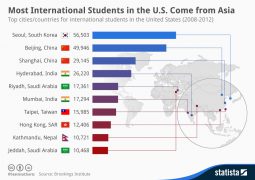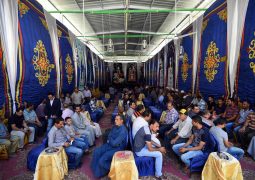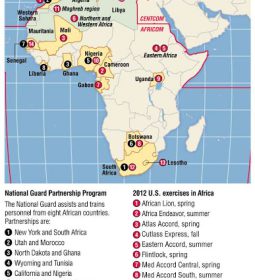As Gaza approaches 2020 ‘uninhabitable’ deadline, Palestinians strive to weather the collapse


Mohammed al-Sahar, 29, owns a petroleum shop where customers bring in home cooking gas tanks and he refills them using an electrical machine. About four months ago he innovated an alternative way to refill gas cylinders as a work-around for frequent power cuts in Gaza. He refurbished an air conditioner from from a car, and aptly named it, the Al-Sahar.
“I went to a car workshop and bought an air conditioner device with $150 and returned home.”
Al-Sahar didn’t attend high school, still he designed a crank arm connected to the air conditioner that could be manually operated, added some new parts, and assembled a cordless gas refilling machine in his neighbor’s blacksmith shop.
“In 15 minutes I finished assembling the device, then I returned to my shop to try it, I wasn’t totally sure that it will work.”
Next he linked the crank to a rubber coated wire and readied an empty the cylinder. When he churned, the refill machine worked.
“I jumped from joy after I filled the first cylinder,” al-Sahar said. “After one hour of the trial, I posted a paper on the door of my shop saying ‘service is available for 24 hours despite electricity cuts.’”
Al-Sahar is one of many Palestinains who are finding ways to survive amid a collapsing environment and economy. In 2015 the United Nation made a shocking pronouncement: that years of siege, coupled with ruined infrastructure from three wars in six years, will make Gaza “unliveable” by 2020. Of course people do live in Gaza, around 2 million.
That deadline for when the Gaza Strip can no longer support human habitation is now around six months away.
Back at the gas shop, al-Sahar said that the difference between his device and a regular tank refill machine that plugs into the wall is the time to takes to replenish each cylinder. Where the original electrical device takes three minutes, his device takes six.
“I think the timing issue is not a major challenge. I don’t think that three minutes is too long to wait to fill a gas cylinder,” he said.
Within three weeks, al-Sahar fashioned 40 more power converters from air conditioners that could modify hand held machines to also become cordless. This has made him somewhat famous among merchants in Gaza.
“I’m very happy that the electricity crisis didn’t stop me from succeeding in my business and from supporting my poor family.”
Al-Sahar lives in a small house in the Jabalia refugee camp in northern Gaza. He is married and has three children and a fourth will be born in summer. Aside from his immediate family his income supports 10 more relatives.
“The first month of opening my business the profit was very tiny because I used to pay a monthly fee for an electrical generator in our area. Every hour of the generator costs around one dollar.”
About the commercial electrical generators: they entered Gaza by the end of 2009 and their number in Gaza is around 200. These generators are owned by private individuals produce a total of 100 watts every day and sell electricity to around 50,000 people.
Worth noting that such generators caused electrical faults from time to time that led to killing three citizens and injury of 80 others, including 7 children. According to the al-Mezan Center for Human Rights, the electricity crisis in Gaza dates back to 2006 when Israel targeted, for a first time, the only central power plant in Gaza. It was called Operation Summer Rains, a four-month conflict that began shortly after Hamas came to power. The result was $15.5 million in damages to the plant that was also never fully repaired.
The same year imports stalled, including purchased electricity and natural gas, as Israel imposed an intensive blockade over the sea, air and land, which continues to date.
Then during the summer 2014 war, Israel targeted the power plant once again. That led to electricity cuts to up to 20 hours per day. Most recently, as of last October, the electricity cuts decreased temporarily after Qatar intervened to buy the necessary fuel needed to operate the station. Today Gaza averages TK hours of electricity per day.
Palestinians in Gaza have found alternatives for electricity. Here, candles a common source of household light as are more expensive options such as small home generators and Ultra Power Supply devices to charge computers and cell phones.
According to al-Mezan Center for Human Rights, 32 deaths including 25 children and one woman, and 36 injuries, including 20 children and 6 women, took place from 2010 to 2018 as a result of fire from candles or sparking generators that exploded inside homes.
Siege and sanctions deepens energy shortages
An absence of electricity is not the only dilemma for al-Sahar. The availability of his stock of cooking gas depends on Israeli permission for goods to move through the commercial checkpoints into Gaza.
As I wrapped my interview with al-Sahar, he told me “I was able to overcome the electricity crisis, but it seems that there’s no solution to Israeli restrictions of opening and closing of the Kerem Shalom checkpoint. When the crossing closes, my work stops.”
Sameer Hamada, head of Gaza’s gas committee, the Petroleum and Gaza Station Owners Association, explained, “the cooking gas quantities entering Gaza on a normal day are between 280 to 290 tons, which is less than half of Gaza’s population needs that reach 550 to 650 tons.”
Outside of cooking gas, the Gaza Strip needs 500 megawatts per day, yet current availability from the grid runs at only 140 megawatts per day, according to the Gaza Electricity Distribution Corporation. It’s worth noting that electricity in Gaza comes from three sources: electricity purchased from Israel (120 megawatts), electricity generating stations and one generator owned by the Distribution Corporation (20 megawatts, and electricity purchased from Egypt (23 megawatts), which frequently does not arrive.
Before 2017 and before Palestinian President Mahmoud Abbas startedpunitive measures against Gaza that deepened electrical shortages, the Palestinian Authority used to pay Egypt and Israel to import fuel to operate Gaza’s power plant. But it’s not the case anymore. Even though Hamas administers Gaza, it electrical imports are mostly negotiated by Ramallah.
Mustafa al-Sawaf, political analyst in Gaza and editor-in-chief of the Felestin considered close to Hamas described, “The electricity crisis is a pure political crisis; where Israel tries to put pressure on Gaza through it, in addition the political division between Hamas and Fateh.”

Palestinians look at a flooded street with sewage in al-Sabra neighborhood, in Gaza City on November 13, 2013. The main pump of sewage water which serves thousands of citizens in a densely populated area was stopped during the power cuts in the area due to a fuel shortage, causing sewage overflow out of the station in the lower nearby areas. (Photo: Ashraf Amra/APA Images)
Olympic pools of liquid sewage
The electricity crisis is one of the main contributors of Gaza’s decline to an environmental wasteland. Without power to pump sewage, local municipalities are dumping waste into the sea without treatment.
According to the environmental expert Salah al-Sady, who works as a lecturer for the Islamic University of Gaza, 80 percent of the liquid sewage ends up in the Mediterranean Sea, or 50,000 cups per day. It is “the equivalent of 43 Olympic-sized swimming pools of raw or partly treated sewage is pumped into the sea every day,” wrote Gregor von Medeazza last January, head of Water and Sanitation at UNICEF.
Overflow at dump sites has seeped into the groundwater. As a result, 97 percent of what comes out of the tap is not suitable for human consumption.
Yet people in Gaza still drink from the faucet or use the water for bathing and cooking.
The general director of water and waste water in Gaza’s municipal government, Maher Salem, said cities suffer from major collapse of infrastructure and can barely can deliver the demand of 50 to 60 liters of water to every individual per day. The World Health Organization’s recommended average daily consumption rate is 120 liters per day. What’s more, Salem said drinking water in Gaza has been non potable for two years, and there is no other aquifer or source of water inside of Gaza. The “excessive extraction of water from aquifers,” said Khaloud Abu Elhen, chief of the Water and Environment department at al-Azhar University, “allows Mediterranean waters with sewage and chemicals to leak into it.”
That means in order to get clean drinking water, the majority of households of Gaza depend on buying filtered water from the specialized vendors or bottled imported water, which all has high cost.
About the possible solutions to this crisis: Abu Elhen proposed laws that restrict the drilling of groundwater wells, as well as developing a wastewater treatment system and limits to irrigation to ease pressure on the aquifer. It’s a comprehensive plan aimed at improving the system of the water network.
Nabil al-Swalhy, a lecturer in science department at al-Azhar University, said “it’s possible to operate the wastewater treatment station by using solar panels. During the year 2016 solar energy started to be used in Gaza as a new way to generate electricity and overcome the electricity crisis but because of its high cost it’s difficult to use it in households.”
Beyond liquid waste, solid waste is an even older problem.
There are only three official landfills in Gaza, Sofa in eastern Khan Younis, Tal Alsoltan in Rafah, and Johr Aldik in eastern Gaza. These landfills hit capacity 11 years ago. Despite this fact, these landfills still receive waste until now and new unofficial landfills (70 to 80) are being used in areas close to homes and farms.
Nour al-Madhoun, head of the solid waste department for the headquarters of municipal councils, a trade union-like body run out of Khan Younis, said, “landfills expired in 2008, and we believe that we entered the first phase of a real humanitarian environmental crisis.”
What’s more, only 5.2 percent of recyclable materials in Gaza are recycled. “The siege is a huge border to adopting recycling,” said Madhoun. “There are many individual youth initiatives but there’s not enough support for them.”
Zeinab Aziz, 28, with 20 of her friends opened a community project to promote household recycling as a practical step average Palestinians can take to reduce the amount of waste. With no facilities to process recycling, single-use plastic bags are as materials in artistic works. They becomes the fabric for doll clothes, and are sold at bazaars for at a reduced price. Each doll in a brightly colored knitted-bag sweater or dress costs around $2.
Aziz is a mother of three. She named her team “heritage.” Most of the women who make the clothes have college degrees but can’t find work in Gaza.
“Our major goal is to contribute to saving the environment and making it a better place for our children. This initiative also helps us to find a source of living with modest costs,” she said.
- Previous Will it switch to China? Solomon Islands plans due diligence tour on Taiwan ties
- Next NATO calls on Russia to destroy new missile, warns of response
















